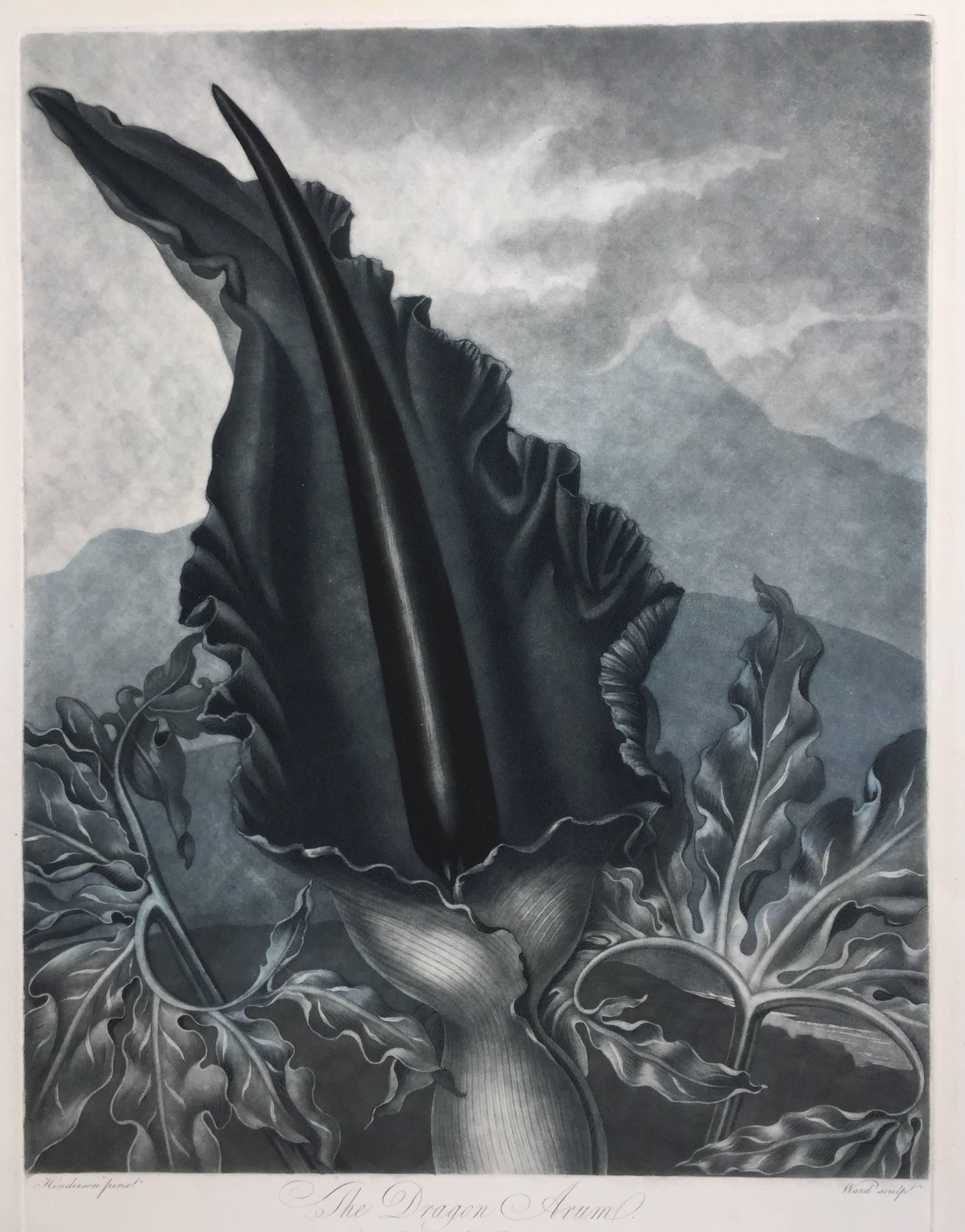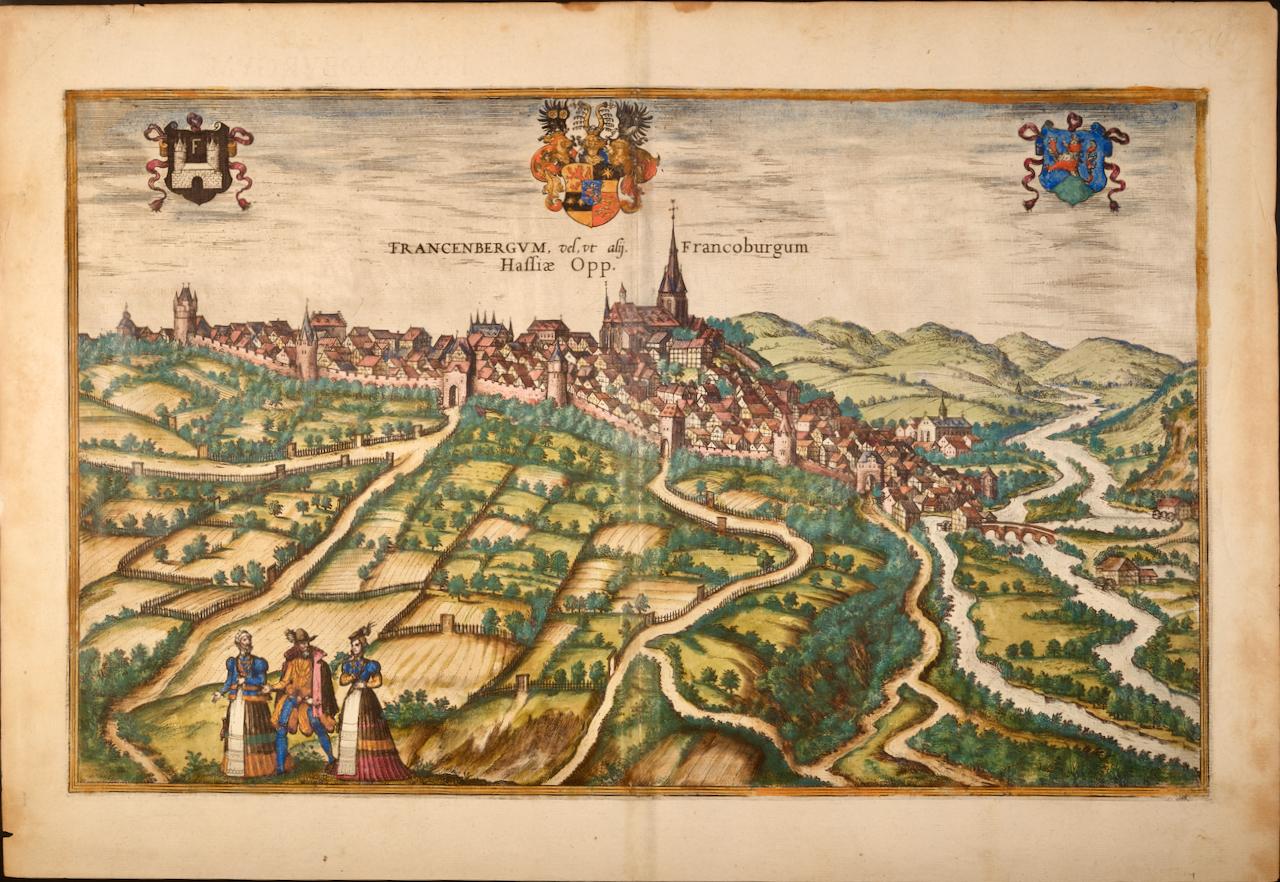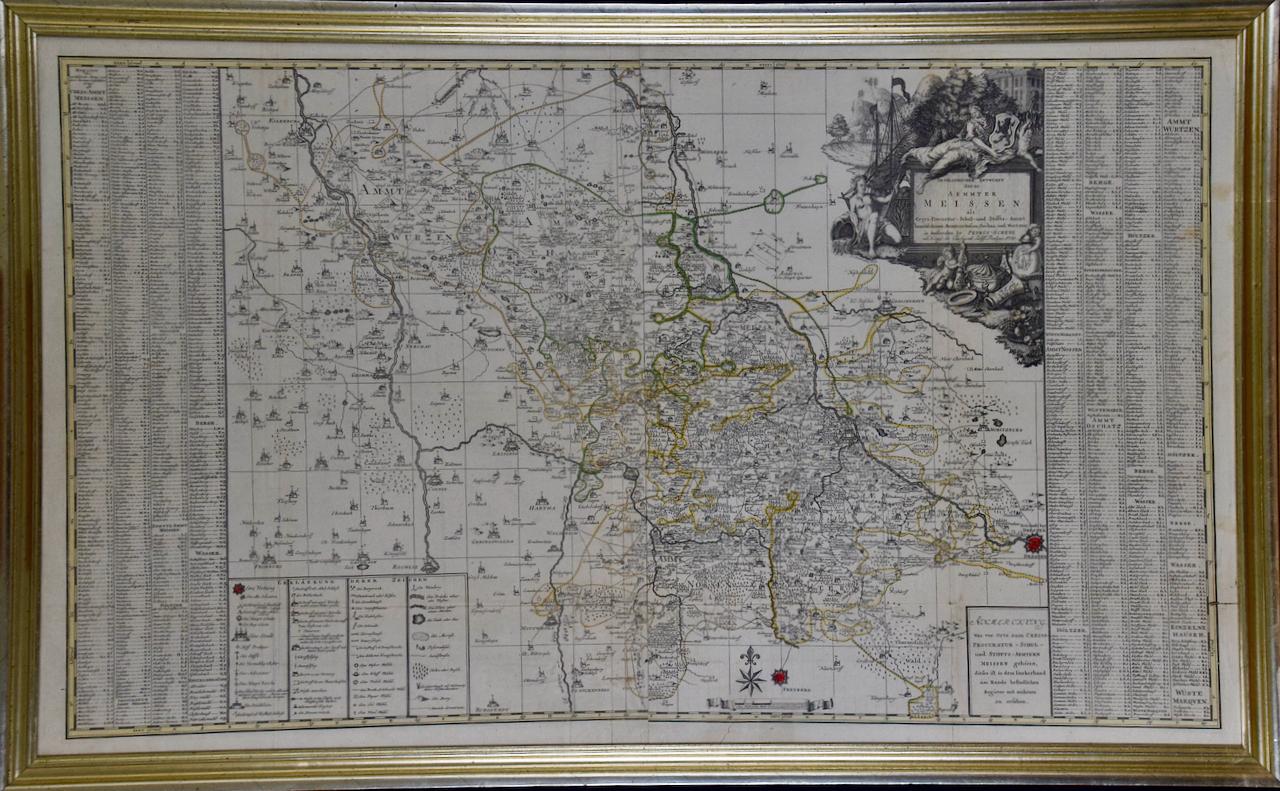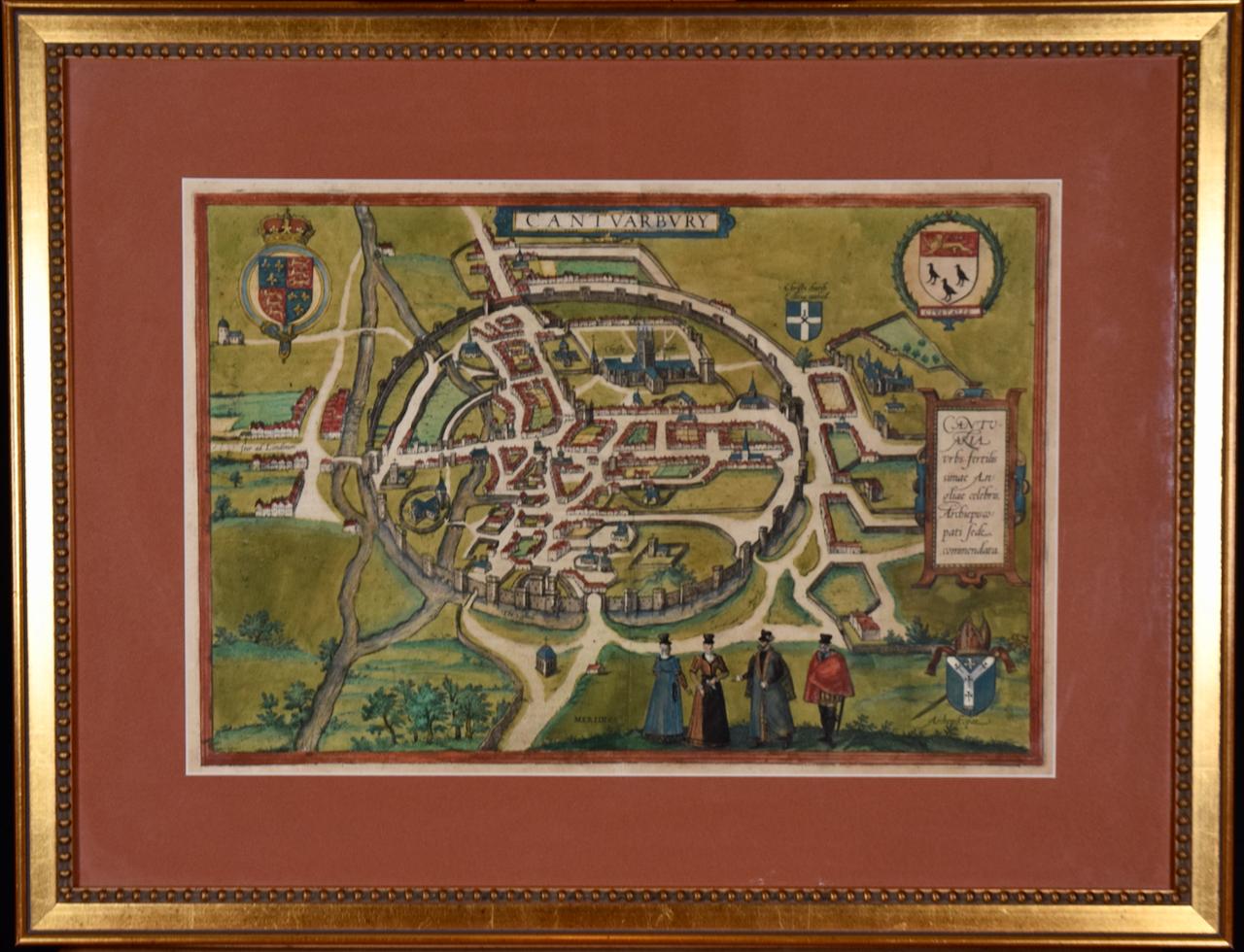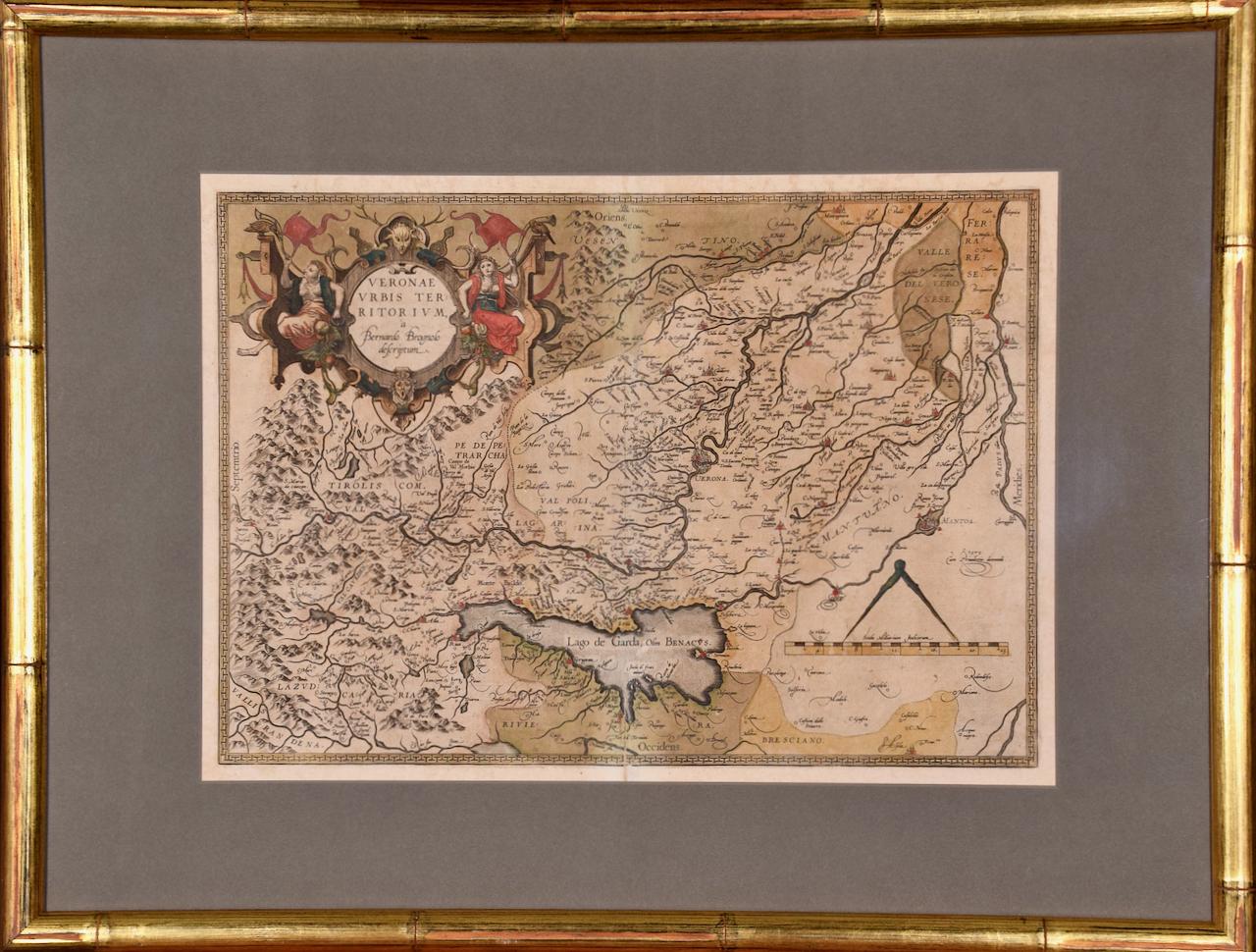Items Similar to The Deluge - JOSEPH MALLORD WILLIAM TURNER (1775 - 1851)
Want more images or videos?
Request additional images or videos from the seller
1 of 10
The Deluge - JOSEPH MALLORD WILLIAM TURNER (1775 - 1851)1828
1828
About the Item
(after) JOSEPH MALLORD WILLIAM TURNER (1775 - 1851)
THE DELUGE, 1828. Mezzotint, Engraved by I. P. Quilly after a painting by J. M.W. Turner R.A.. Image 15 1/8 x 22 3/4 inches, plate 18 1/8 x 25 inches, sheet 19 3/8 x 25 1/2 inches.
Dramatic iarge scale mage in the manner of John Martin's important mezzotints. Good - fair condition with some surface rubbing as is common in mezzotints of this large size and vintage. Sheet has numerous tiny dots in the margins particularly the lower margin, that are likely not foxing but something else. This example has the lightly engraved dedication line "To The Right Honorable (the late) Earl of Carysfort KP", with the Publication line "London Published June 24, 1828 by Moon, Boys & Graves, Printsellers to the King, 6 Pall Mall"
SEE COMMENTS ON THIS PUBLICATION BELOW
The Tate Gallery discusses this print extensively: It suggests that Turner produced this large scale mezzotint to compete with upstarts John Martin and Francis Danby
TATE GALLERY DESCRIPTION:
Lit: Rawlinson II 1913, no.794, engraver's proof (b); Lyles and Perkins 1989, pp.62–3, no.56, repr.
"In the late 1820s Turner supervised the production of a number of large-scale mezzotints after his oils, chiefly subjects which he had painted much earlier in his career. T 04838 was based on ‘The Deluge’, which was painted c. 1805 and exhibited at the Royal Academy in 1813 (Tate Gallery, N 00493; Butlin and Joll 1984, no.55). In their dark tonality many of Turner's early pictures lent themselves particularly well to translation into mezzotint.
It has been suggested that Turner's wish to bring ‘The Deluge’ to the public's attention again in 1828 by publishing a mezzotint of it may have been prompted by increasing competition from two younger painters who specialised in similar apocalyptic subjects, John Martin and Francis Danby (see Andrew Wilton, Turner and the Sublime, exh. cat., British Museum 1980, p.139). It was in 1826 that Martin produced his first version of a deluge subject, publishing a mezzotint of it in 1828. Danby's first biblical canvas was exhibited in 1825. Quilley's mezzotint includes a number of macabre details which are absent from the original oil and which suggest that Turner may indeed have been responding to the sensationalist canvases of these two rivals. The barest indication of a snake in the water in the foreground of the oil has been transformed in the print into a group of intertwined and writhing serpents; the print also adds a pair of outstretched hands protruding just above the surface of the water to the left, indicating the futile struggle of a panic-stricken victim who has already been engulfed. Both these details were pencilled in by Turner on an early engraver's proof now in the British Museum (1893-6-12-172).
The latest known impression of this engraving (of which there is an example in the British Museum, 1948-4-10-145) carries a dedication line ‘to The Right Honorable (the late) Earl of Carysfort KP’ and the publication line ‘London, Published June 24, 1828, by Moon, Boys & Graves, Printsellers to the King, 6 Pall Mall’. However, Rawlinson expresses doubts as to whether the print was actually published (Rawlinson II 1913, p.383), and indeed the Catalogue of the Fourth Portion of the Engravings from the Works of J.M.W. Turner R.A. (Turner sales, Christie's, 3–7 March 1874) lists ‘The Deluge’ under a sequence of ‘the unpublished mezzotints’.
In 1830 Quilley engraved another large mezzotint after Turner, ‘The Garden of Boccaccio - The Birdcage’ (Rawlinson II 1913, no.797), and in 1831 he also collaborated with John Martin in the production of a large mezzotint of ‘Pandemonium’ (see M.J. Campbell, John Martin: Visionary Printmaker, exh. cat., York City Art Gallery 1992, pp.108–9). However, little is known about his life or training (Rawlinson mistakenly refers to him as ‘J.B.’ Quilley)."
- Creation Year:1828
- Dimensions:Height: 15.15 in (38.49 cm)Width: 25.5 in (64.77 cm)
- Medium:
- Movement & Style:
- After:Joseph Mallord William Turner (1775 - 1851, British)
- Period:
- Condition:
- Gallery Location:Santa Monica, CA
- Reference Number:1stDibs: LU41138286332
About the Seller
5.0
Recognized Seller
These prestigious sellers are industry leaders and represent the highest echelon for item quality and design.
Platinum Seller
These expertly vetted sellers are 1stDibs' most experienced sellers and are rated highest by our customers.
Established in 1977
1stDibs seller since 2016
267 sales on 1stDibs
Typical response time: <1 hour
Associations
International Fine Print Dealers Association
- ShippingRetrieving quote...Ships From: Santa Monica, CA
- Return PolicyA return for this item may be initiated within 7 days of delivery.
More From This SellerView All
- THE DRAGON ARUMBy Dr. Robert John ThorntonLocated in Santa Monica, CADR. ROBERT JOHN THORNTON (circa 1768- 1837) THE DRAGON ARUM, 1801 (Dunthorne plate 161, pg. 250 i/iii; Nissen 1 955) Mezzotint printed in Payne's grey...Category
Early 1800s Old Masters Landscape Prints
MaterialsMezzotint
- AMERICABy John SpeedLocated in Santa Monica, CAIMPORTANT AMERICAN MAP - ONE OF THE FIRST TO SHOW CALIFORNIA as an ISLAND JOHN SPEED (1552-1629) AMERICA - With Those Known Parts In That Unknown Worlde (sic), 1626-(76) (Burden 217 iv/iv) Engraving, uncolored. Engraved by Abraham Goos and published by Thomas Basset and Richard Chiswell - 4th state of 4 in 1676 15 1/8 x 20 1/2” From “A Prospect of the Most Famous Parts of the World”. Generally good condition. A repaired split in lower centerfold. This is the most common version of this important map...Category
1620s Old Masters Landscape Prints
MaterialsEngraving
- WORLD MAP - Planisphaerium Terrestre Sive Terrarum Orbis... 1696By Carel AllardLocated in Santa Monica, CACAREL ALLARD (1648 – 1709) PLANISPHAERIUM TERRESTRE SIVE TERRARUM ORBIS… 1696 (Shirley 578) Engraving, 20 ½ x 23 ½”, sheet 21 x 24 1/8". A stunning double hemisphere World Map...Category
17th Century Old Masters Landscape Prints
MaterialsEngraving
- New Map of the Terraqueous Globe - WORLD MAP - CALIFORNIA AS AN ISLANDBy Edward WellsLocated in Santa Monica, CAEDWARD WELLS (British 1667- 1727) A NEW MAP of the TERRAQUEOUS GLOBE - according to the latest Discoveries and most general Divisions of it into CONTINENTS and OCEANS, 1700-01 (Shirley 609) Engraved by Michael Burghers, Oxford. Hand-colored, Platemark 14 1/4 x 20 1/8 inches. Central cartouche flanked by figures representing the continents with dedication to William, Duke of Gloucester...Category
Early 1700s Old Masters Landscape Prints
MaterialsEngraving
- PERUBy Johannes JanssonLocated in Santa Monica, CAJOHANNES JANSSON (1588 - 1664) PERU, engraving with early coloring. Platemark 15 1/8 x 19 3/8 inches, sheet 17 x 20 1/2 A nice example of one of the earliest maps of Peru. From the ...Category
1630s Old Masters Landscape Prints
MaterialsEngraving
- AMERICAE - Sive Novi Orbis, Nova DescriptioBy Abraham OrteliusLocated in Santa Monica, CAABRAHAM ORTELIUS (1527 - 1598) AMERICAE SIVE NOVI ORBIS, NOVA DESCRIPTIO, 1587 (1603) (Van Den Broecke 11, Burden 64; Schwartz & Ehrenberg 69) Engraving. A very good, well printed...Category
16th Century Old Masters Landscape Prints
MaterialsEngraving
You May Also Like
- Frankfort, Germany: A 16th Century Hand-colored Map by Braun & HogenbergBy Franz HogenbergLocated in Alamo, CAThis is a 16th century original hand-colored copperplate engraved map of Frankfort, Germany entitled "Francenbergum, vel ut alij Francoburgum Hassiae Opp" by Georg Braun & Franz Hogenberg, from their famous city atlas "Civitates Orbis Terrarum", published in Cologne, Germany in 1595. This is an English translation of an excerpt from the original text in the atlas: "Frankenberg or, according to others, Francoburgum, a town in Hesse. Charlemagne vested the town of Frankenberg with many freedoms and privileges, which it still enjoys to this day, and on account of its valiant and victorious soldiers awarded a signet, upon which there formerly appeared a golden castle with a tower, together with the letter F and a golden crown. Frankenberg, seen here from the northeast, lies on a hill above the River Eder. The hillside is covered with fields neatly separated by bushes and fences. Soaring above the town is the massive Liebfrauenkirche, which was modelled on St Elizabeth's church in Marburg. The New Town was founded in 1335 at the foot of the hill (right) and merged with the Old Town as late as 1556. Frankenberg was founded by Conrad of Thuringia in 1233/34 to prevent the archbishops of Mainz from expanding their sphere of influence...Category
16th Century Old Masters Landscape Prints
MaterialsEngraving
- Meissen, Germany : A Large Framed 18th Century Map by Petrus SchenkLocated in Alamo, CAThis is a hand-colored 18th century map of the Meissen region of Germany, entitled "Geographischer Entwurff Derer Aemmter Meissen als Creys-Procuratur-Schul-und Stiffts-Ammt benebst ...Category
Mid-18th Century Old Masters Landscape Prints
MaterialsEngraving
- Canterbury: An Original 16th C. Framed Hand-colored Map by Braun & HogenbergBy Franz HogenbergLocated in Alamo, CAThis is a framed 16th century map and city view of Canterbury, England entitled "Cantuarbury" by Braun & Hogenburg, from their famous landmark atlas of city views 'Civitates Orbis Terrarum' (Atlas of the Cities of the World), which was first published in Cologne, Germany in 1572. The map of Canterbury was first published in 1588. It depicts a detailed birdseye view of the completely walled and fortified city of Canterbury, with its cathedral the most prominent feature. The coat of arms of England, Canterbury, and the Archbishop of Canterbury are included. This beautifully hand-colored map is presented in a gold-colored wood frame with a beaded inner trim and a paprika-colored mat that highlights details in the map. The frame measures 18.75" high by 22.25" wide by 0.875" deep. There is a central vertical fold, as issued. The map is in excellent condition. Braun and Hogenberg's 'The Civitates Orbis Terrarum' was the second atlas of maps ever published and the first atlas of cities and towns of the world. It is one of the most important books published in the 16th century. Most of the maps in the atlas were engraved by Franz Hogenberg and the text, with its descriptions of the history and additional factual information of the cities, was written by a team of writers and edited by Georg Braun. The work contained 546 bird-eye views and map views of cities and towns from all over the world. It gave graphic representation of the main features of the illustrated cities and towns, including the buildings and streets. Although the ordinary buildings are stylized, the principal buildings are reproduced from actual drawings created on location. The principal landmarks and streets can still be recognized today. In addition, the maps often include the heraldic arms of the city, the nature of the surrounding countryside, the important rivers, streams and harbors, even depicting stone bridges, wooden pontoons, flat-bottomed ferries, ships and working boats, wharves and jetties, as well as land-based activities, including horsemen, pedestrians, wagons, coaches, and palanquins. Small vignettes are often included which illustrate the trade, occupations and habits of the local inhabitants, such as agriculture, paper-making and textiles, as well as local forms of punishment, such as gibbets, wheels, floggings etc. Large figures dressed in their local costume are often presented out of proportion in the foreground. The aim of the authors was to give as much information as possible in a pleasing visual form. They succeeded in creating maps that were both informative and decorative works of art. The atlas is a wonderful glimpse of life in medieval Europe. Georg Braun (1541-1622) was German Catholic...Category
16th Century Old Masters Landscape Prints
MaterialsEngraving
- Landscape with an Obelisk - Engraving after Rembrandt - 19th CenturyBy Charles Amand DurandLocated in Roma, ITLandscape with an Obelisk is an engraving on ivory-colored paper realized after an etching by Rembrandt dated 1650 ca. This wonderful piece of art belongs to an edition of the late 1...Category
19th Century Old Masters Figurative Prints
MaterialsEngraving
- Northern Italy: A 16th Century Hand-colored Map by Abraham OrteliusBy Abraham OrteliusLocated in Alamo, CAThis is a framed 16th century hand-colored copperplate map of northern Italy entitled "Veronae Urbis Territorium a Bernardo Bragnolo Descriptium" by Abraham Ortelius from his atlas "Theatrum Orbis Terrarum", which was the first modern atlas of the world, with the first volume published in 1570. This map was part of a subsequent volume, published in Antwerp in 1584. It was based on an earlier map by Bernardo Brognoli. This beautiful map of northern Italy is focussed on Verona and its environs, including Mantua. Lake Garda and the South Tyrol mountains are prominently depicted. There is a very large striking cartouche in the upper left and a decorative distance scale in the lower right. This striking hand-colored map of northern Italy is presented in a gold-colored wood frame and an olive green-colored mat. It is glazed with UV conservation glass. All mounting materials used are archival. The frame measures 21.5" high by 28" wide by 0.75" deep. There is a central vertical fold, as issued, with slight separation of the lower portion of the fold. There are faint spots in the upper and right margins, but the map is otherwise in very good condition. Abraham Ortelius (also known as Ortels, Orthellius, and Wortels) (1527-1598) was a Dutch cartographer, geographer, and cosmographer. He began his career as a map colorist. In 1547 he entered the Antwerp guild of St Luke as an "illuminator of maps". He had an affinity for business from an early age and most of his journeys before 1560, were for business. He was a dealer in antiques, coins, maps, and books. His business income allowed him to acquire an extensive collection of medals, coins, and antiques, as well as a large library of books...Category
16th Century Old Masters Landscape Prints
MaterialsEngraving
- The Last Supper, from The Passion of ChristBy Hendrick GoltziusLocated in Middletown, NYEngraving on cream laid paper, 8 x 5 3/8 inches (203 x 137 mm), trimmed at the platemark. A fine impression with a Coat of Arms watermark. Second state, after the addition of the Frederick de Witt...Category
16th Century Old Masters Figurative Prints
MaterialsLaid Paper, Engraving
